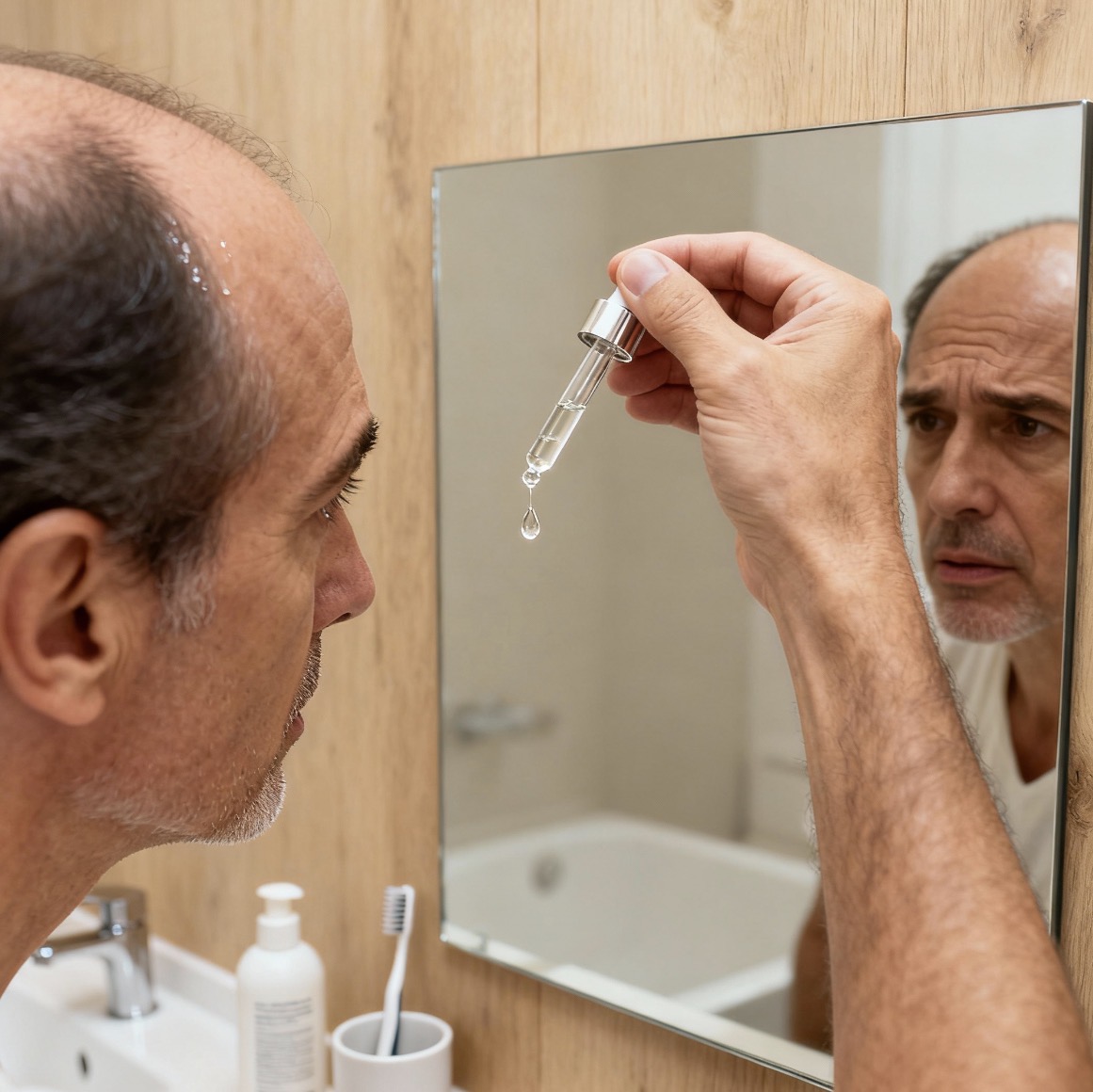Hair thinning and hair loss is very common in both men and women today. It is not all due to your genetic makeup either. There is a huge push, by both the pharmaceutical companies and the prescribing medical professionals, to solve ailments with medication. It’s no wonder we have seen an exponential rise in drug-induced Alopecia.

It’s safe to say that most people reading this article already know that the word Alopecia is a medical term or diagnosis for hair loss. There is a multitude of reasons why someone could develop this condition. For the sake of this article, we will focus on drug-induced Alopecia.
As with any drug-induced side effect, a person must weigh the benefits and the risks. For example, if someone has cancer and chemotherapy is prescribed, most people will accept that hair loss will be a side effect. Most people would agree that the benefit of receiving chemotherapy is far greater than the loss of one’s hair. On the other hand, if a drug for high blood pressure is causing hair loss, there may be an alternative drug or lifestyle change that is available instead. When someone is offered a variety of treatment options, the risk of hair loss becomes one that may be negotiable.
Not all drug-induced Alopecia looks the same. The type of drug, as well as the dosage, will determine how much hair loss or thinning occurs, and where on the scalp it will happen, as well as how long the hair loss will last.

Prescription Drugs
There are many different kinds of drugs that may cause drug-induced Alopecia. The most commonly known drug is Chemotherapy. An interesting thing to note is that not all formulations of chemotherapy will cause hair loss. In addition, some people may begin to lose hair by the second dose, while others may not lose all of their hair until they are further into their treatment plan. Much depends on the person’s overall health, the specific type of chemotherapy, the amount of chemotherapy they are receiving, how they are receiving chemotherapy (systemically or locally).
The majority of drug-induced Alopecia, not caused by chemotherapy, often takes months to appear. The first thing someone might notice is that their hair is thinning. It is less likely that people will lose patches of hair from drug-induced Alopecia. The thing that might make it more noticeable, is the location on the scalp where the hair is thinning or falling out. It commonly occurs on the top of the scalp. At least, it is more noticeable there for most.
As mentioned in a previous article called The Seven Year Itch, it is not uncommon for people to lose 50-100 hairs per day while in the telogen phase of hair growth.
Although not an exhaustive list of all drugs that may cause hair loss, below are several drugs that are more commonly known to have hair loss as a side effect:
- Cholesterol-lowering medications – Atorvastatin (Lipitor) and Simvastatin (Zocor)
- Immunosuppressant Drugs
- Anticoagulant (blood thinner) – Warfarin (Coumadin)
- Blood pressure medications – Captopril and Lisinopril
- Psoriasis treatment – Acitretin (Soriatane)
- Anti-arrhythmia drug – Amiodarone (Cordarone or Pacerone)
- Anticonvulsant – Divalproex (Depakote)
- Antacid – Cimetidine (Tagamet)
- Gout medication – Colchicine
- Steroids – Testosterone and Progesterone (Depo-Provera, Provera, and Prometrium)
- Acne treatments – Isotretinoin (Absorica and Accutane)
- Antifungal medications – Ketoconazole
In addition to these medications, it is also possible to lose hair due to illness, thyroid disorders, childbirth, major changes in weight, chronic iron deficiency, and nutritional imbalances and stress.
If you are experiencing the following signs, it would be wise to meet with a healthcare professional:
- Waking up to hairs on your pillow
- More hair than usual in your hairbrush or comb
- More hair than usual falling out when showering or found in the drain

Medical History Form
Your doctor will want to get your complete medical history and take into account all medications and over-the-counter drugs/supplements you take, your overall health and diet situation, any recent illnesses or surgeries, and your family history with regard to hair loss. Depending on your doctor’s assessment of the situation, they may also want to perform a hair pull test and examination, a scalp analysis, a scalp biopsy, and/or blood tests.
The best way to deal with drug-induced Alopecia is to discontinue taking the medication causing the hair loss. Never stop taking a medication without first consulting with your medical professional. Your overall health will always be a priority. It may be possible to switch to a different medication that does not cause hair loss. Fortunately, most drug-induced Alopecia is reversible. It may only take a few months for the hair to start growing back after the problem medication is discontinued.
Contributing Editor, Lisa Marie Stewart, has 40 plus years of writing, marketing, creative development, Editor-in-Chief, and Creative Director experience. Initially studying journalism and English, and ultimately received a Business Administration and Management B.S. degree with honors.
Ms. Stewart has authored, managed and directed teams at Fortune 500 companies to create corporate policies and procedures, human resource guides, emergency preparedness manuals, technical instructions, articles, newsletters, internal company magazines, retail store transition instruction guides, change orders, year-end financial brochures, website content, social media blogs, and posts.
Additionally, Lisa hosts her own YouTube channel entitled: Living My Best Life







Leave A Comment